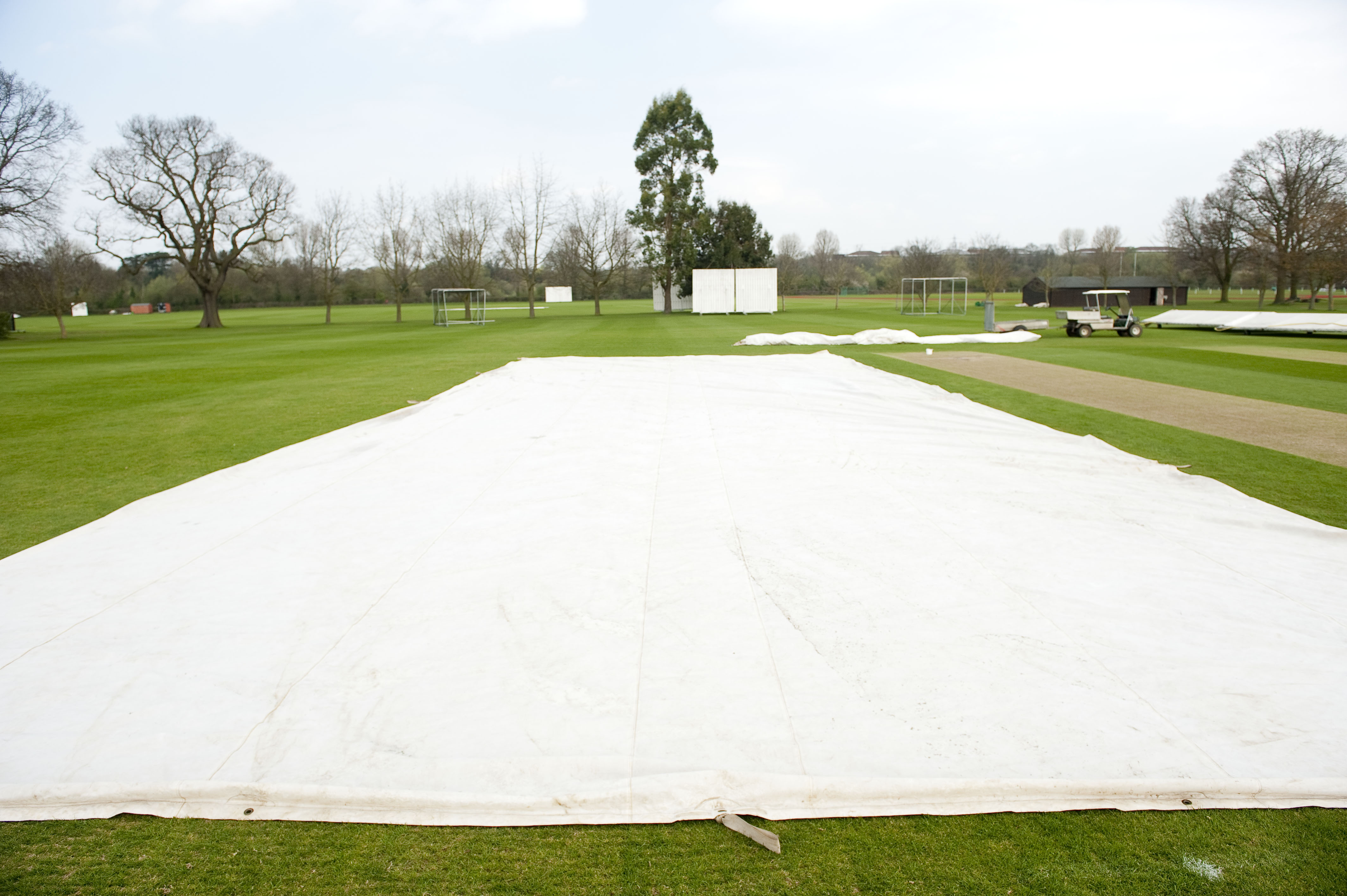If the pitch is covered then it is usually the bare ends on the square that are wet and slippery and hold up play because they are very slow drying. Click here for repairing pitches for use later in the season as quickly as possible after use is a good way to help prevent this, but covering the square may also be necessary.
Whereas a pitch cover is normally the size of the pitch, or just a little bit bigger, squares are normally covered using much larger flat sheet covers. If the whole square is to be covered, this is normally done using several overlapping sheets.
Flat sheets need to be sized carefully – because a compromise must be struck between having a sheet large enough to be deployed quickly and one which is manageable and safe to use in wind. The bigger the sheet, the more people needed to deploy and recover it. A mixture of sizes can help as different pitch positions may require different widths to be covered. Speak to your supplier about the optimum configuration for you.
Carry out a risk assessment on covering to determine methods of deployment and recovery and the number of people required to do this. Take extra precaution in windy conditions and if necessary do not deploy/recover.
Flat sheets should be stored in protective covers when not in use to reduce UV degradation and reduce the risk of spike damage.
Be aware that if you have automatic irrigation around the square you might need to consider sprinkler position when determining the length of the covers, or vice-versa.
Tips on flat sheets:
- Moving a sheet is a manual handling task and should be approached as such, however, moving a sheet in windy conditions should have its own risk assessment, since any sheet can act as a sail. – If in doubt, do not get it out! Getting the game on is important but it is not worth causing serious injury – whether it be to the people putting the sheet out, or the people who will have the sheet flying towards them if it blows out of the control of the grounds team/players deploying it.
- Make sure there are a suitable amount of people to safely handle the sheet (this will mean more people when it is windy)
- Plan the task and make sure that everyone knows the plan, as well as what to do if a gust of wind gets hold of the sheet.
- In windy conditions always keep the leading edge of the sheet taught and low to the ground.
- Never, ever wrap a handle around your hand or wrist! You must always be able to let go if necessary.
- Always peg the windward side of the sheet first, otherwise it can end up on top of you.
- If the wind is gusting and the sheet becomes unmanageable, do not all hold on. This just turns the sheet into a large sail. Depending on the wind strength, if everyone but one person lets go, the sheet will quickly blow downwind and will take the energy out of it. Do not get dragged along by it – let go and shout warnings to anyone downwind. However you should not be getting into this situation – if in doubt, do not cover.
- Rolling out is the best way to deploy any sheet in windy conditions. The weight of the rolled sheet is more condensed and you can peg as you go and the sheet stays close to the ground. Large inflatable tubes can be used to help roll on and off large sheets safely.
- Make sure players are not walking across the sheet with spikes on - this creates holes that leak.


 Tweet
Tweet